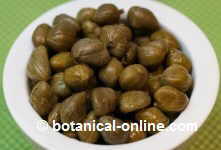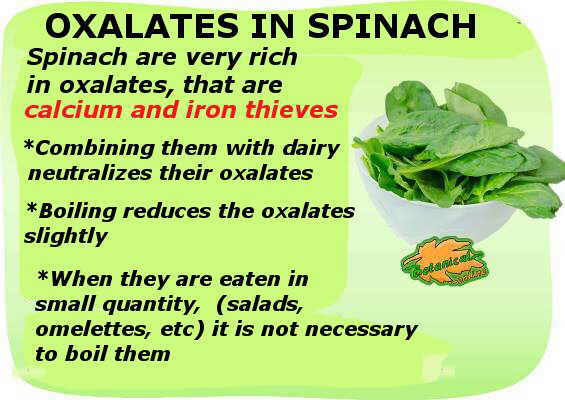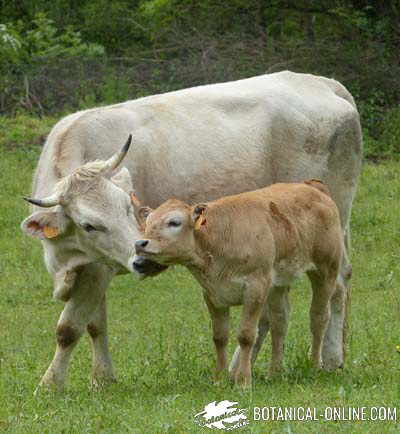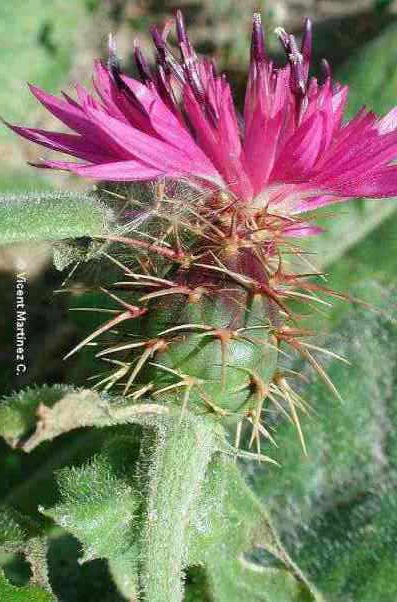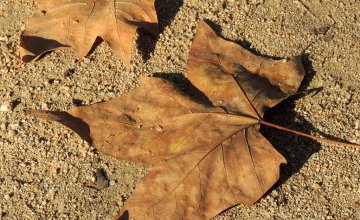Contents
What is photosynthesis?
Unlike animals that need to digest processed foods, plants are able to produce their own food through a chemical process called photosynthesis. To make photosynthesis possible plants have a green pigment called chlorophyll which is responsible for absorbing the right light for this process. In addition to plants, green algae and certain types of bacteria also perform photosynthesis. The living beings that are capable of producing their own food are known as autotrophs.
Photosynthesis definition |
Photosynthesis is a process that converts the energy of sunlight into chemical energy. Basically it consists in the elaboration of sugars from C02 (carbon dioxide) minerals and water with the help of sunlight. |
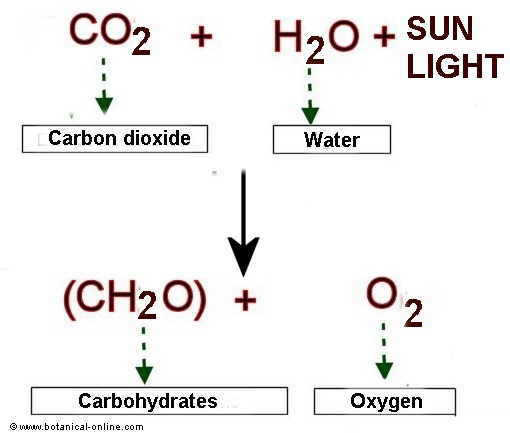
Scheme of photosynthesis
Factors affecting photosynthesis
Photosynthesis is conditioned by five main factors:
– Light: Light is necessary for this process to be performed. It must be an adequate light because its effectiveness depends on different wavelengths in the visible spectrum. The most effective is the red-orange. Blue light is very inefficient and green virtually nil, although some marine plants are able to take it.
– Water: Water is an essential component in the chemical reaction of photosynthesis. It is also the means necessary so that the chemical elements in the soil that plants use to build their tissues can be dissolved.
– Carbon dioxide: It is the “material” that, fixed with water, plants use to synthesize carbohydrates. It penetrates into the leaves through the stomata, although, in a very small proportion, it can proceed from bicarbonate dissolved in the soil water that plants absorb through their roots.
– Pigments: These are substances that absorb the necessary light to produce the reaction. Among them, the principal is chlorophyll or pigment that gives green color to plants. Chlorophyll is mixed with other pigments, but when appearing in a higher proportion, generally imposes its color on the rest which are masked.
– Temperature: A determined temperature for the reaction may occur is necessary. It is considered that the ideal temperature for maximum productivity is between 20 and 30 ° C, however there may be between 0 and 50 ° C, according to the conditions under which each plant has adapted to its environment. It is possible even with a temperature of -0.5 ° C. Below freezing point can not be photosynthesis.
Phases of photosynthesis?
Photosynthesis comprises two phases:
– Photochemical phase or Hill reaction: Previously it was known as light phase. For this phase can be done, plants must absorb light. Plants absorb light through substances called pigments. Among these, there is the chlorophyll, the green pigment that is within the chloroplasts of the plant cell.
It is the large proportion of this pigment that determines the plants mainly present their green color as the bulk amount of chlorophyll masks the smaller proportion of other pigments. We see plants green because green light is not absorbed by plants so it is captured by our eyes. However, it is the orange-red light and blue which is used by most plants for photosynthesis. Other plants, such as certain red seaweeds, are capable of absorbing the green light for photosynthesis. They use different pigments to chlorophyll.
Pigments owe their color to light that are not able to absorb. For example, chlorophyll absorbs almost all colors of the visible spectrum except green. Therefore, the absorption capacity of chlorophyll and other pigments and photosynthesis intensity depend on the different types of wavelength of light. Since chlorophyll is the primary pigment, the absorption will be the largest in the red-orange, lower in the blue spectrum and practically ineffective in the green spectrum.
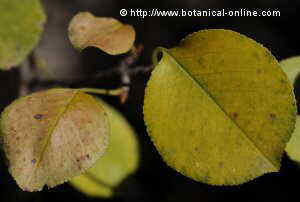 The loss of green chlorophyll as the leaves are drying reveals other plant pigments previously hidden by it. |
Types of chlorophyll
There are two types of chlorophyll:
– Chlorophyll A: having a bluish green
– Chlorophyll B: that has a yellowish green color. The first is much more abundant than the second and displayed at a rate three times higher. Chlorophyll A is mainly responsible for capturing the lengths of violet and red wavelengths.
Plant pigments have not isolated but are combined with each other. Thus, besides chlorophyll A and B, there are other pigments called carotenoids and phycobilins. The latter appear in lower plant organisms (algae and cyanobacteria). Carotenoids can be carotenes, xanthophylls with an orange and reddish coloration with yellowing and brown. Carotenoids and phycobilins, along with chlorophyll B, are responsible to absorb those wavelengths that can not absorb chlorophyll A (green and orange-red). Thus, once absorbed, they are transferred to chlorophyll A, so that they can be transformed.
– Phase of carbon dioxide fixation (Calvin Cycle): It corresponds to what was previously known as dark phase. Today is preferred to omit this term, having been accepted that this process also needs the light to be carried out. This cycle occurs in the chloroplast stroma and converts the CO2 that plants absorb via stomata in carbohydrates. For this process to be done the materials developed in the previous phase should be used.
How photosynthesis occurs?
Photosynthesis occurs mainly in the leaves of plants, although, in a less degree, it may occur on stems, especially in some plants that have suffered adaptations, such as cacti or succulents.
A leaf consists essentially of the following parts:
– Epidermis: The epidermis is the outer layer of the leaf that covers both the upper side of the leaf and the underside.
– Mesophyll: It is is the middle layer of the sheet, between the upper side and the underside
– The vascular bundles: They are the channels in the form of veins, allowing the transport of nutritive substances and water.
– Stomata: They are a kind of holes or valves that allow gas exchange between the interior of the leaf and the environment outside.
The process of photosynthesis takes place in the middle layer of the leaf or mesophyll, where the specialized bodies in this process are called chloroplasts. Chloroplasts consist primarily of an outer membrane, and inner membrane and one a series of sacks, called thylakoids membranes in which chlorophyll pigments or other are formed. Thylakoids are grouped in vertical columns called grana. Inside chloroplasts remaining space is covered by a fluid called stroma.
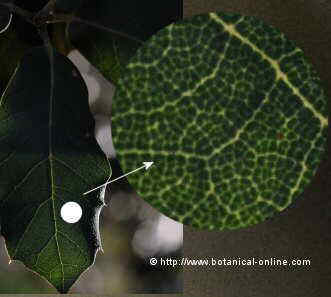 Photo of oak leaf (Quercus ilex) with an enlarged detail in which you can see the green color of chlorophyll present in chloroplasts of plant cells |
The reaction occurs in the thylakoid membranes where the pigments that are able to absorb different wavelengths of light. This absorption of light produces a chemical reaction when the photon energy decomposes water and releases oxygen, protons and electrons. Electrons are used to synthesize two molecules responsible for storing and transporting energy: ATP (adenosine triphosphate) and NADP (Nicotinamide adenine dinucleotide phosphate).
These two molecules are used in the next phase of photosynthesis to transform carbon dioxide (CO2) and water (H2O) for the production of organic matter. (Carbohydrates)
The phase of fixation of carbon dioxide or no Calvin cycle is carried out in the thylakoids but in the stroma. During this cycle, carbon dioxide and ATP get form the first organic compound molecules glyceraldehyde-3-phosphate molecule containing three carbon atoms, from which carbohydrates are formed.
In most plants, the Calvin cycle is linked to the photochemical phase so that the plants are regulated by enzymes for both processes occur simultaneously. Plants following this process are called C3 plants.
C4 plants
An exception to this type of plants are C4 plants and CAM plants or acid metabolism plants. C 4 plants achieve by a special enzyme to add a step to the Calvin cycle and, previously to glyceraldehyde-3-phosphate, they elaborate a molecule containing 4 carbon atoms, called oxaloacetate. Hence they are known as C4 plants. Thus they manage to overcome the efficiency of photosynthesis at low water availability.
Water is needed to metabolize CO2. (In the metabolism of C3 plants, per each water molecule and per four photons is formed half an oxygen molecule, 1.3 molecules of ATP, and NADPH + H +.) When the C3 plants detect the lack of water in the ground, as in the summer, close the stomata and stop the process of photosynthesis.
C4 plants can continue to work because they get photosynthesis with low levels of CO2. This group plants a number of plants from warm and dry, such as corn, sorghum, millet, sugar cane or grass. This is the reason why grass, for example, is so resistant to drought.
CAM plants or plants with acid metabolism (Crassulacean Acid Metabolism)
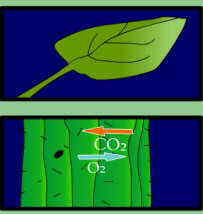 Flash animation of C.A.M metabolism |
CAM plants get to fix CO2 at night because during the day their stomata remain closed to prevent water loss.
The particular photosynthetic process carried out by the succulents, including cacti are, explains how plants have evolved to withstand extraordinary conditions of environmental dryness.
Most vegetables in the process of photosynthesis need to open stomata to absorb carbon dioxide and expel oxygen, with the consequent loss of water through transpiration. Cacti only open stomata at night, to avoid dehydration. Thus gas exchange is performed in the dark.
Cacti expel oxygen to the atmosphere and absorb carbon dioxide, which remains in acid (generally malic acid) until the next morning when the plant, in the presence of sunlight, performs the chlorophyll function and extracts dioxide carbon from acid to transform it into sugar. This process is called C.A.M (In English = Crassulean Acid Metabolism) because it was first observed with sedum (Crassulaceae family).
Importance of photosynthesis
Resulting from this process, it is oxygen., A waste product, which comes from the decomposition of water. Oxygen, which is formed by the reaction between CO2 and water, is expelled from the plant through stomata of the leaves.
Plants have had, and still have, a fundamental role in the history of life on Earth. They are responsible for the presence of oxygen, a necessary gas for most beings who populate our planet and need to breathe. But this was not always so. At first the atmosphere of Earth had virtually no oxygen and was especially rich in carbon dioxide (CO2), water as vapor (H2O) and nitrogen (N). This place would have been unbearable for most current species that need oxygen to live.
The first living beings did not need oxygen to breathe. Rather, this gas will constitute a poison to them. They were certain bacteria, along with the plants, which, more than 2000 million years ago started to begin the process of photosynthesis, transforming the atmosphere and enabling life as known today.
* Related information: Plant respiration
![]() More information on plants.
More information on plants.

